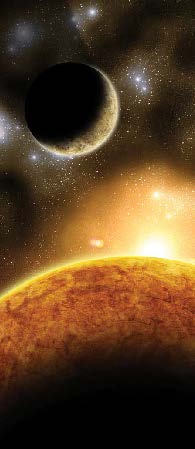By using the same technique that recently revealed two planets more than 5,000 light years away from Earth, Ohio State University researchers could again potentially uncover new celestial bodies.
The technique, called gravitational microlensing, is based on one aspect of Einstein’s theory of relativity: gravity bends space. When two stars align almost perfectly with Earth, the gravity of the star closest to Earth temporarily bends and magnifies the light from the more distant star. The closer the stars are to a straight line the greater the magnification, and the more intricate and complex the data.
Andrew Gould, Ph.D., a professor of astronomy at The Ohio State University, and his colleagues are using the Ohio Supercomputer Center to decipher data collected by a team of international astronomers from such a microlensing event last year.
“The light curve had two sharp spikes, so we knew almost immediately there is a planet,” Gould said, “because stars without planets produce smooth, bell-shaped light curves.” However, after many weeks of intensive calculations, a single-planet model just didn’t fit.
“That means there must be a second object orbiting the star,” Gould said. To identify the object, Gould and Ohio State graduate student Subo Dong are testing more than 100 million different models on OSC’s supercomputers.
“No matter what our answers turn out to be, this is exciting,” Dong said. “We just need to figure out if the second orbiting object is another star, or a new planet."
--
Project lead: Andrew Gould, Ph.D., The Ohio State University
Research title: High magnification microlensing: Theory & planet detection
Funding source: National Science Foundation
